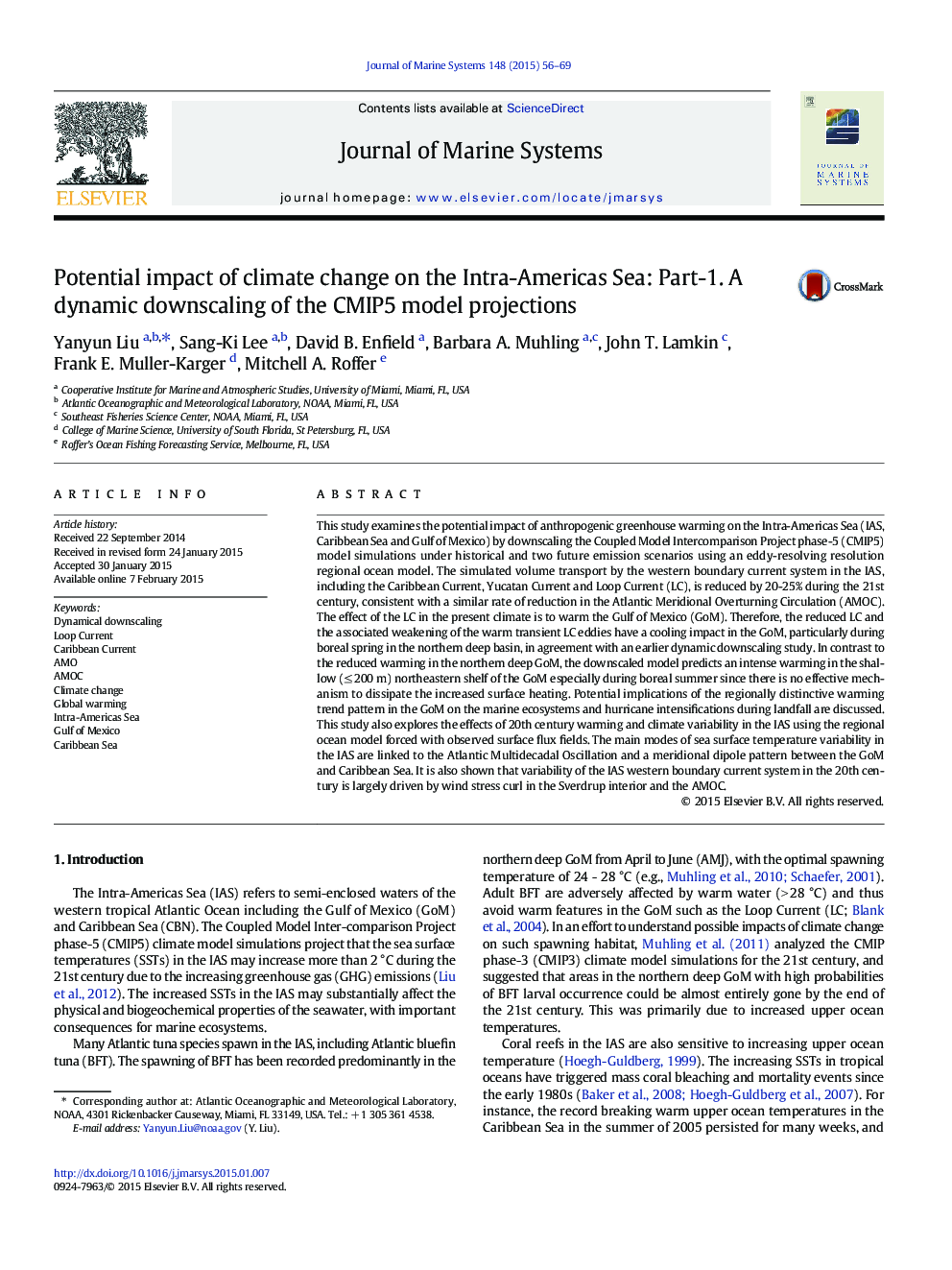| کد مقاله | کد نشریه | سال انتشار | مقاله انگلیسی | نسخه تمام متن |
|---|---|---|---|---|
| 6386713 | 1627281 | 2015 | 14 صفحه PDF | دانلود رایگان |
عنوان انگلیسی مقاله ISI
Potential impact of climate change on the Intra-Americas Sea: Part-1. A dynamic downscaling of the CMIP5 model projections
دانلود مقاله + سفارش ترجمه
دانلود مقاله ISI انگلیسی
رایگان برای ایرانیان
کلمات کلیدی
موضوعات مرتبط
مهندسی و علوم پایه
علوم زمین و سیارات
اقیانوس شناسی
پیش نمایش صفحه اول مقاله

چکیده انگلیسی
This study examines the potential impact of anthropogenic greenhouse warming on the Intra-Americas Sea (IAS, Caribbean Sea and Gulf of Mexico) by downscaling the Coupled Model Intercomparison Project phase-5 (CMIP5) model simulations under historical and two future emission scenarios using an eddy-resolving resolution regional ocean model. The simulated volume transport by the western boundary current system in the IAS, including the Caribbean Current, Yucatan Current and Loop Current (LC), is reduced by 20-25% during the 21st century, consistent with a similar rate of reduction in the Atlantic Meridional Overturning Circulation (AMOC). The effect of the LC in the present climate is to warm the Gulf of Mexico (GoM). Therefore, the reduced LC and the associated weakening of the warm transient LC eddies have a cooling impact in the GoM, particularly during boreal spring in the northern deep basin, in agreement with an earlier dynamic downscaling study. In contrast to the reduced warming in the northern deep GoM, the downscaled model predicts an intense warming in the shallow (â¤Â 200 m) northeastern shelf of the GoM especially during boreal summer since there is no effective mechanism to dissipate the increased surface heating. Potential implications of the regionally distinctive warming trend pattern in the GoM on the marine ecosystems and hurricane intensifications during landfall are discussed. This study also explores the effects of 20th century warming and climate variability in the IAS using the regional ocean model forced with observed surface flux fields. The main modes of sea surface temperature variability in the IAS are linked to the Atlantic Multidecadal Oscillation and a meridional dipole pattern between the GoM and Caribbean Sea. It is also shown that variability of the IAS western boundary current system in the 20th century is largely driven by wind stress curl in the Sverdrup interior and the AMOC.
ناشر
Database: Elsevier - ScienceDirect (ساینس دایرکت)
Journal: Journal of Marine Systems - Volume 148, August 2015, Pages 56-69
Journal: Journal of Marine Systems - Volume 148, August 2015, Pages 56-69
نویسندگان
Yanyun Liu, Sang-Ki Lee, David B. Enfield, Barbara A. Muhling, John T. Lamkin, Frank E. Muller-Karger, Mitchell A. Roffer,